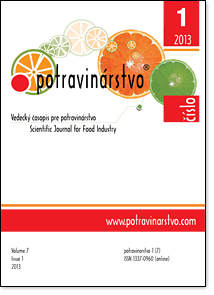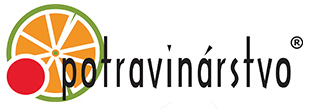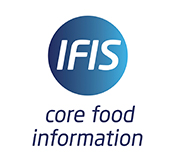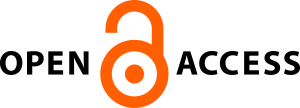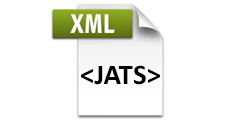Antioxidant and antiproteinase effects of buckwheat hull extracts
DOI:
https://doi.org/10.5219/272Keywords:
antioxidant activity, buckwheat hulls, enzyme inhibition, flavonoids, serine proteasesAbstract
Buckwheat is known not only due to its appropriate nutritional composition but the content of prophylactic compounds, too. These are responsible for buckwheat beneficial impact on human health. Most of them are concentrated in outer layers of buckwheat grain. The subject of this work was to screen hulls of nine common and one tartary buckwheat cultivar for the content of flavonoids and its antioxidant and antiproteinase effects. The highest content of total flavonoids was determined for tartary buckwheat cultivar Madawaska (0.6% of hulls weight). Among common buckwheat cultivars the best values reached samples Bamby (0.23%) and KASHO-2 (0.11%). Antioxidant activity as detected via binding radical ABTS (2,2'-azino-bis(3-ethylbenzothiazoline-6-sulphonic acid)) and monitoring reducing power was the most effective for samples with highest flavonoid content. Buckwheat hulls effectively inhibited pathophysiological proteases thrombin and urokinase, whereas only little effects were seen to trypsin and elastase. In this testing there were again the best samples with highest flavonoid content. Only tartary buckwheat Madawaska effectively inhibited elastase at tested concentrations. No significant correlation was determined between flavonoid content and measured antioxidant or protease inhibitory action. Obtained results allow us to commend tartary buckwheat cultivar Madawaska as well as common buckwheat cultivars Bamby and KASHO-2 for further experiments.
Downloads
Metrics
References
Benzie, I. F. F., Strain, J. J. 1996. The ferric reducing ability of plasma (FRAP) as a measure of „antioxidant power“: the FRAP assay. Analytical Biochemistry, vol. 239, no. 1, p. 70- 76. https://doi.org/10.1006/abio.1996.0292, PMid:8660627 DOI: https://doi.org/10.1006/abio.1996.0292
Danihelová, M., Šturdík, E. 2012. Nutritional and health benefits of buckwheat. Potravinarstvo, vol. 6, no. 3, p. 1-9. https://doi.org/10.5219/206 DOI: https://doi.org/10.5219/206
Danihelová, M., Jantová, S., Šturdík, E. 2013. Cytotoxic and antioxidant activity of buckwheat hull extracts. Journal of Microbiology, Biotechnology and Food Sciences, vol. 2, special issue, p. 1314-1323.
Gladysheva, I. P., Dunaevskiĭ, I. a E., Belozerskiĭ, M. A., Gladyshev, D. P., Papisova, A. I., Larionova, N. I. 1995. Inhibition of exogenous serine proteinases by a trypsin inhibitor from the buckwheat IT-1 seeds. Biokhimiia, vol. 60, no. 9, p. 1530-1535. PMid:8562658
Guo, X.-D., Ma, Y.-J., Parry, J., Gao, J.-M., Yu, L.-L., Wang, M. 2011. Phenolics content and antioxidant activity of tartary buckwheat from different locations. Molecules, vol. 16, no. 12, p. 9850-9867. https://doi.org/10.3390/molecules16129850 PMid:22117174 DOI: https://doi.org/10.3390/molecules16129850
Jedinák, A., Maliar, T., Grančai, D., Nagy, M. 2006. Inhibition activities of natural products on serine proteases. Phytotherapy Research, vol. 20, no. 3, p. 214-217. https://doi.org/10.1002/ptr.1836, PMid:16521112 DOI: https://doi.org/10.1002/ptr.1836
Jiang, P., Burczynski, F., Campbell, C., Pierce, G., Austria, J. A., Briggs, C. J. 2007. Rutin and flavonoid contents in three buckwheat species Fagopyrum esculentum, F. tataricum, and F. homotropicum and their protective effects against lipid peroxidation. Food Research International, vol. 40, no. 3, p. 356-364. https://doi.org/10.1016/j.foodres.2006.10.009, DOI: https://doi.org/10.1016/j.foodres.2006.10.009
Kim, C. D., Lee, W.-K., No, K.-O., Park, S.-K., Lee, M.-H., Lim, S. R., Roh, S.-S. 2003. Anti-allergic action of buckwheat (Fagopyrum esculentum Moench) grain extract. International Immunopharmacology, vol. 3, no. 1, p. 129-136. https://doi.org/10.1016/S1567-5769(02)00261-8, DOI: https://doi.org/10.1016/S1567-5769(02)00261-8
Kim, S. H., Cui, C. B., Kang, I. J., Kim, S. Y., Ham, S. S. 2007. Cytotoxic effect of buckwheat (Fagopyrum esculentum Moench) hull against cancer cells. Journal of Medicinal Food, vol. 10, no. 2, p. 232-238. https://doi.org/10.1089/jmf.2006.1089, PMid:17651057 DOI: https://doi.org/10.1089/jmf.2006.1089
Kreft, S., Štrukelj, B., Gaberščik, A., Kreft, I. 2002. Rutin in buckwheat herbs grown at different UV-B radiation levels: comparison of two UV spectrophotometric and an HPLC method. Journal of Experimental Botany, vol. 53, no. 375, p. 1801-1804. https://doi.org/10.1093/jxb/erf032, PMid:12147730 DOI: https://doi.org/10.1093/jxb/erf032
Krkošková, B., Mrázová, Z. 2005. Prophylactic components of buckwheat. Food Research International, vol. 38, no. 5, p. 561-568. https://doi.org/10.1016/j.foodres.2004.11.009 DOI: https://doi.org/10.1016/j.foodres.2004.11.009
Markovic, G., Sedej, I., Mišan, A., Sakač, M., Tadić, V., Mandić, A., Pestorić, M. 2009. Phenolic compounds and antioxidative properties of buckwheat grain, hull and flours. Planta Medica, vol. 75, no. 9, p. 86. https://doi.org/ 10.1055/s-0029-1234411 DOI: https://doi.org/10.1055/s-0029-1234411
Oomah, B. D., Mazza, G. 1996. Flavonoids and antioxidative activities in buckwheat. Journal of Agricultural and Food Chemistry, vol. 44, no. 7, p. 1746-1750. https://doi.org/10.1021/jf9508357 DOI: https://doi.org/10.1021/jf9508357
Oparin, P. B., Mineev, K. S., Dunaevsky, Y. E., Arseniev, A. S., Belozersky, M. A., Grishin, E. V., Egorov, T. A., Vassilevski, A. A. 2012. Buckwheat trypsin inhibitor with helical hairpin structure belongs to a new family of plant defence peprides. The Biochemical Journal, vol. 446, no. 1, p. 69-77. https://doi.org/10.1042/BJ20120548, PMid:22612157 DOI: https://doi.org/10.1042/BJ20120548
Quettier-Deleu, C., Gressier, B., Vasseur, J., Dine, T., Brunet, C., Luyckx, M., Cazin, M., Cazin, J.-C., Bailleul, F., Trotin, F. 2000. Phenolic compounds and antioxidant activities of buckwheat (Fagopyrum esculentum Moench) hulls and flour. Journal of Ethnopharmacology, vol. 72, no. 1-2, p. 35-42. https://doi.org/10.1016/S0378-8741(00)00196-3 DOI: https://doi.org/10.1016/S0378-8741(00)00196-3
Re, R., Pellegrini, N., Proteggente, A., Pannala, A:, Yang, M., Rice-Evans, C. 1999. Antioxidant activity applying an improved ABTS radical cation decolorization assay. Free Radical Biology & Medicine, vol. 26, no. 9-10, p. 1231-1237. https://doi.org/10.1016/S0891-5849(98)00315-3 DOI: https://doi.org/10.1016/S0891-5849(98)00315-3
Sedej, I., Mišan, A., Sakač, M., Mandić, A., Pestorić, M. 2008. Antioxidative properties of buckwheat grain, hull and flour. Planta Medica, 74, no. 9, p. 52. https://doi.org/10.1055/s-0028-1084897 DOI: https://doi.org/10.1055/s-0028-1084897
Sedej, I., Sakač, M., Mandić, A., Mišan, A., Tumbas, V., Čanadanović-Brunet, J. 2012. Buckwheat (Fagopyrum esculentum Moench) grain and fractions: antioxidant compounds and activities. Journal of Food Science, vol. 77, no. 9, p. C954-C959. https://doi.org/10.1111/j.1750-3841.2012.02867.x, PMid:22888949 DOI: https://doi.org/10.1111/j.1750-3841.2012.02867.x
Sun, T., Chi-Tang, H. 2005. Antioxidant activities of buckwheat extracts. Food Chemistry, vol. 90, no. 4, p. 743- 749. https://doi.org/10.1016/j.foodchem.2004.04.035 DOI: https://doi.org/10.1016/j.foodchem.2004.04.035
Tsai, H., Deng, H., Tsai, S., Hsu, Y. 2012. Bioactivity comparison of extracts from various parts of common and tartary buckwheats: evaluation of the antioxidant- and angiotensin-converting enzyme inhibitory activities. Chemistry Central Journal, vol. 6, no. 1, p. 78. https://doi.org/10.1186/1752-153X-6-78, PMid:22853321 DOI: https://doi.org/10.1186/1752-153X-6-78
Tsybina, T. A., Dunaevsky, Y. E., Musolyamov, A. K., Egorov, T. A., Belozersky, M. A. 2001. Cationic inhibitors of serine proteinases from buckwheat seeds. Biokhimiia, vol. 66, no. 9, p. 941-947. https://doi.org/10.1023/A:1012388805336 DOI: https://doi.org/10.1023/A:1012388805336
Tsybina, T., Dunaevsky, Y., Musolyamov, A., Egorov, T., Larionova, N., Popykina, N., Belozersky, M. 2004. New protease inhibitors from buckwheat seeds: properties, partial amino acid sequences and possible biological role. Biological Chemistry, vol. 385, no. 5, p. 429-434. https://doi.org/10.1515/BC.2004.049, PMid:15196004 DOI: https://doi.org/10.1515/BC.2004.049
Verardo, V., Arráez-Román, D., Segura-Carretero, A., Marconi, E., Fernández-Gutiérrez, A., Caboni, M. F. 2010. Identification of buckwheat phenolic compounds by reverse phase high performance liquid chromatography-electrospray ionization-time of flight-mass spectrometry(RP-HPLC-ESI- TOF-MS). Journal of Cereal Science, vol. 52, no. 2, p. 170- 176. https://doi.org/10.1016/j.jcs.2010.04.009 DOI: https://doi.org/10.1016/j.jcs.2010.04.009
Wang, Z.-H., Zhao, Z.-H., Zhang, Z., Yuan, J.-M., Noback, D., Wieslander, G. 2006. Purification and characterization of a protease inhibitor from Fagopyrum tartaricum Gaertn seeds and its effectiveness against insects. Chinese Journal of Biochemistry and Molecular Biology, vol. 22, no. 12, p. 960- 965.
Watanabe, M., Ohshita, Y., Tsushida, T. 1997. Antioxidant compounds from buckwheat (Fagopyrum esculentum Moench) hulls. Journal of Agricultural and Food Chemistry, vol. 45, no. 4, p. 1039-1044. https://doi.org/10.1021/jf9605557 DOI: https://doi.org/10.1021/jf9605557
Wieslander, G., Fabjan, N., Vogrinčič, M., Kreft, I., Janson, C., Spetz-Nnyström, U., Vombergar, B., Tagesson, C., Leanderson, P., Norbäck, D. 2011. Eating buckwheat cookies is associated with the reduction in serum levels of myeloperoxidase and cholesterol: A double blind crossover study in day-care centre staffs. The Tohoku Journal of Experimental Medicine, vol. 225, no. 2, p. 123-130. https://doi.org/10.1620/tjem.225.123, PMid:21931228 DOI: https://doi.org/10.1620/tjem.225.123
Xiong, S.-L., Li, A.-L., Ren, F., Jin, H. 2009. Study on extraction of total flavonoids from powder or husks of different cultivars of buckwheat and analysis on their free radical scavenging activities. Food Science, vol. 30, no. 3, p. 118-122.
Yildiz, G., Bilgiçli, N. 2012. Effects of whole buckwheat flour on physical, chemical, and sensory properties of flat bread, Lavaş. Czech Journal of Food Sciences, vol. 30, no. 6, p. 534-540. DOI: https://doi.org/10.17221/10/2012-CJFS
Yongyan, H., Baili, F., Tao, D., Pengtao, L., Jinfeng, G., Yan, C. 2007. Antioxidant activity of ethanol extracts of different buckwheat. Proceedings of the 10th International Symposium on Buckwheat, China, p. 465-468. ISBN 9787810923583.
Zhao, G., Peng, L.-X., Wang, S., Hu, Y.-B., Zou, L. 2012. HPLC fingerprint – antioxidant properties study of buckwheat. Journal of Integrative Agriculture, vol. 11, no. 7, p. 1111-1118. https://doi.org/10.1016/S2095-3119(12)60104-X DOI: https://doi.org/10.1016/S2095-3119(12)60104-X
Zielińska, D., Syawara-Nowak, D., Zieliński, H., 2010. Determination of the antioxidant activity of rutin and its contribution to the antioxidant capacity of diversifed buckwheat origin material by updated analytical strategies. Polish Journal of Food and Nutrition Sciences, vol. 60, no. 4, p. 315-321.
Downloads
Published
How to Cite
Issue
Section
License
This license permits non-commercial re-use, distribution, and reproduction in any medium, provided the original work is properly cited, and is not altered, transformed, or built upon in any way.

